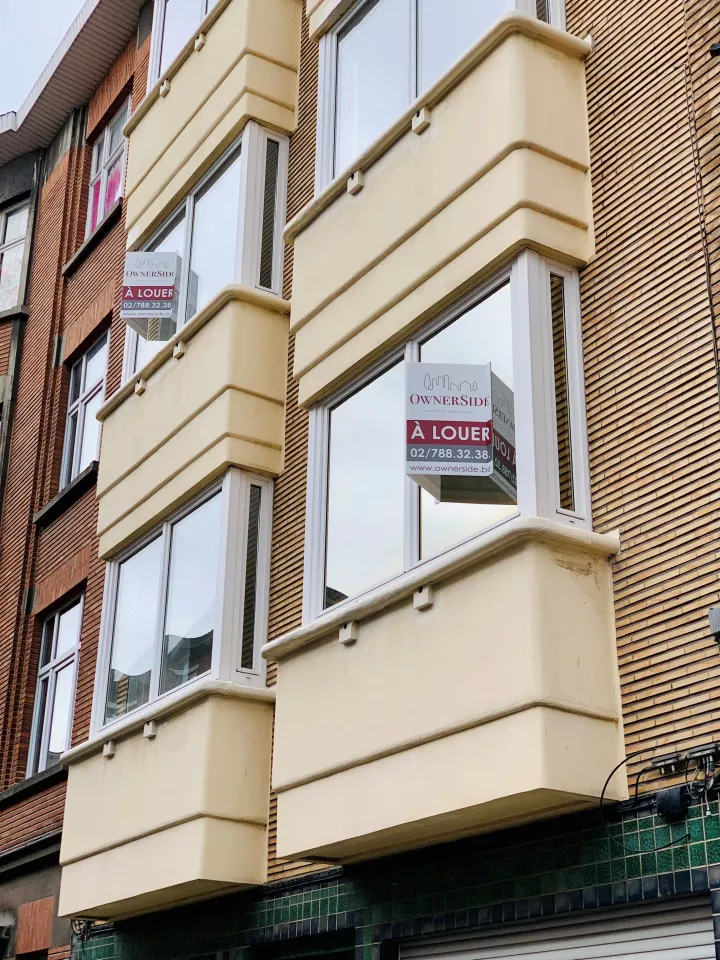
A fine turnkey acquisition that proved fairly complex has drawn to a close. It was for a BuyerSide client who wished to reinvest part of the capital obtained upon the sale of his company a few years ago.
A turnkey building on sale in Brussels
The property in question is a building suitable for letting in La Chasse district of Etterbeek. This concrete structure comprises seven one-bedroom apartments and a three-bedroom duplex with a superb terrace overlooking the district.
BuyerSide found out about the sale of this building off market, before the owners, two young people joining forces for the first time to undertake a purchase-renovation-resale project, sold the units separately. They had in fact already contacted several real-estate agencies for individual valuations and were preparing to begin marketing.
So the main issue for the buyer was to make an offer for a building where work was still underway, on the basis of a series of assumptions about the turnkey acceptance of a renovated property.
A list of the work to be done before signing the official deed of sale
We included in the offer a long list of the work/final details that still had to be dealt with, including the inspection by the SIAMU (Brussels fire department). The latter had to submit a report without any comments. In fact, the property had been granted a town planning permit conditional upon compliance with the requirements of the SIAMU, as is always the case. The offer also stipulated that the seller was to carry out the work in accordance with professional standards and customary good practices.
Unfortunately, professional standards are not always the same for sellers and buyers. The issues that arose while the work was in progress and during the acceptance procedure mainly concerned the fact that the seller had placed thermostats in the bedrooms of six of the eight apartments. From a technical point of view, this makes no sense as the temperature in a bedroom is usually lower than in the living areas. As a result, the thermostat will cut out even though in the living room it is not warm enough, or too warm. In general, the thermostat is placed in the living room and the thermostatic valve in the bedroom is set at a lower temperature.
Agreement also had to be reached about putting letter boxes in the new front door, which still had to be fitted. The seller had initially been incorrectly informed by his supplier and believed that this was not possible. BuyerSide therefore contacted and met with the supplier and further to a special request to the manufacturer, the supplier’s estimate was adjusted accordingly, to the great satisfaction of the buyer.
OwnerSide entrusted with the rental management of the building
To add a further challenge, our client had called upon our sister company, OwnerSide, to put the apartments up for rent between the sales agreement and the official deed. The aim was to receive the rental income directly as soon as the deed was signed. OwnerSide was also given the task of managing the building once the purchase was complete.
However, the apartments were rented out very quickly and the work was delayed, in particular further to water damage from a neighbouring building. Consequently, the tenants had to move into their apartments even though certain things had not yet been fully settled. OwnerSide had to find solutions quickly to resolve a number of technical issues: make new keys for an old front door before the new one was fitted, sort out the numbers of the new meters that did not correspond to the correct apartments, deal with electrical appliances that were not connected, arrange for the apartments to be cleaned, which involved improvisation, and more.
The good thing about this acquisition is that the practical problems were identified as new tenants were actually living in the apartments, even though this caused more management work for OwnerSide, before the buyer actually took possession by collecting rents.
In addition, excellent communication and collaboration between OwnerSide and BuyerSide were necessary so that the information collected on the ground could also be used for the acquisition.
Complex but successful negotiations for the acquisition of this building in Brussels
Some tasks could not be completed before the official deed of sale was signed. For example, the seller had four months between the sales agreement and the official deed to order the flower boxes that were to be placed 1.9 m from the next-door neighbours, but actually only ordered them two days before the signing. We therefore negotiated for part of the price to be paid by the buyer’s notary to the seller only once the remaining work had been completed, with a deadline, of course. In addition, the SIAMU had conducted its inspection and made some comments. So the seller had taken care of the adjustments requested and was still waiting for the final report, without comments. Plus the seller had to wait until the neighbour’s water damage dried before the necessary repairs could be done.
This reference shows that both OwnerSide and BuyerSide bent over backwards in this particularly difficult, tricky dossier so that the buyer could benefit from a building that was not only delivered on a turnkey basis, but also rented in full by the time the official deed was signed. The legal aspect of the matter settled from the outset resulted in a risk-free purchase for the buyer, to his total satisfaction.
